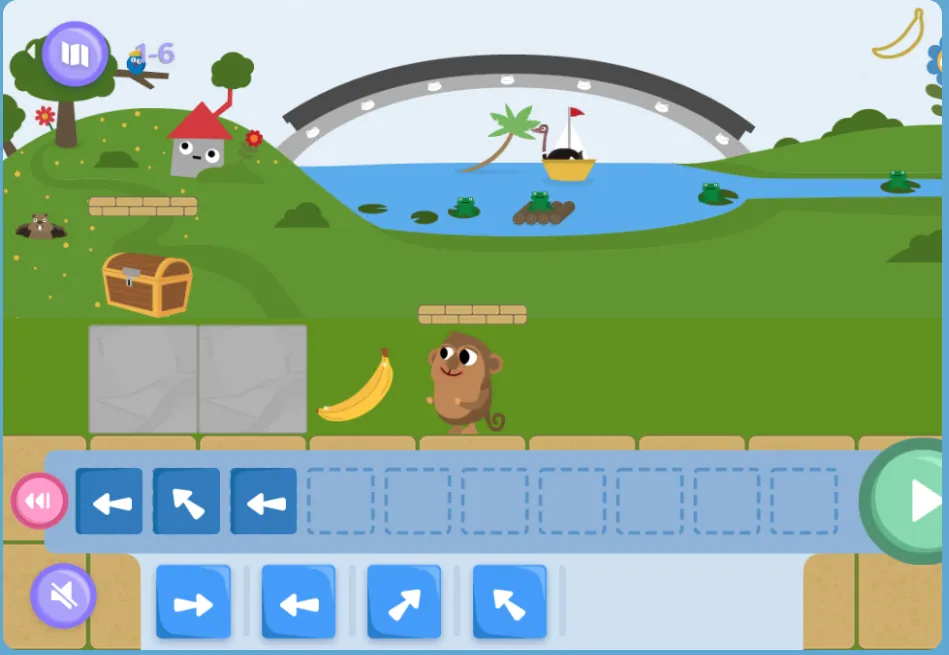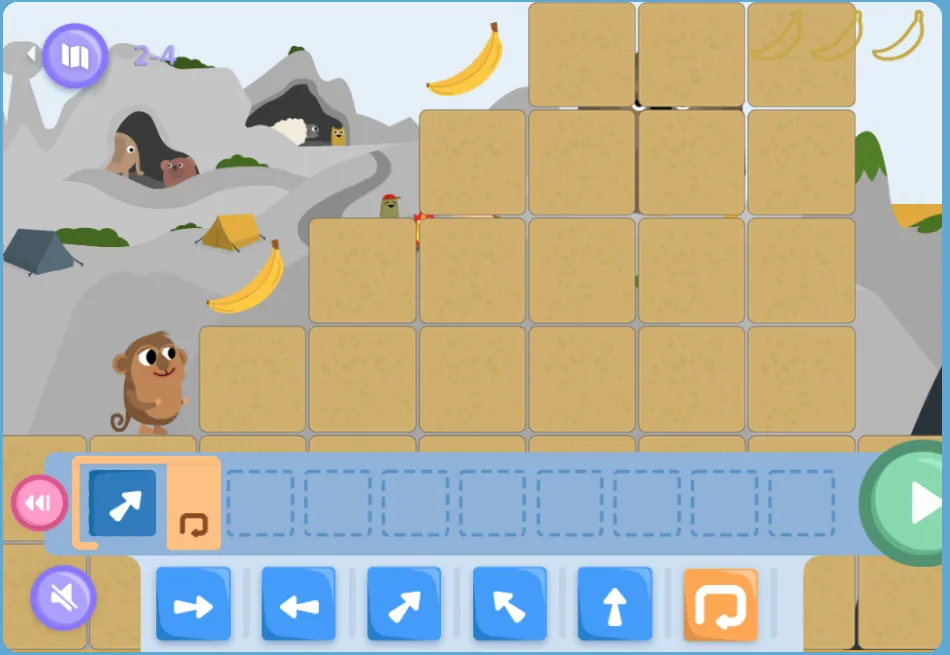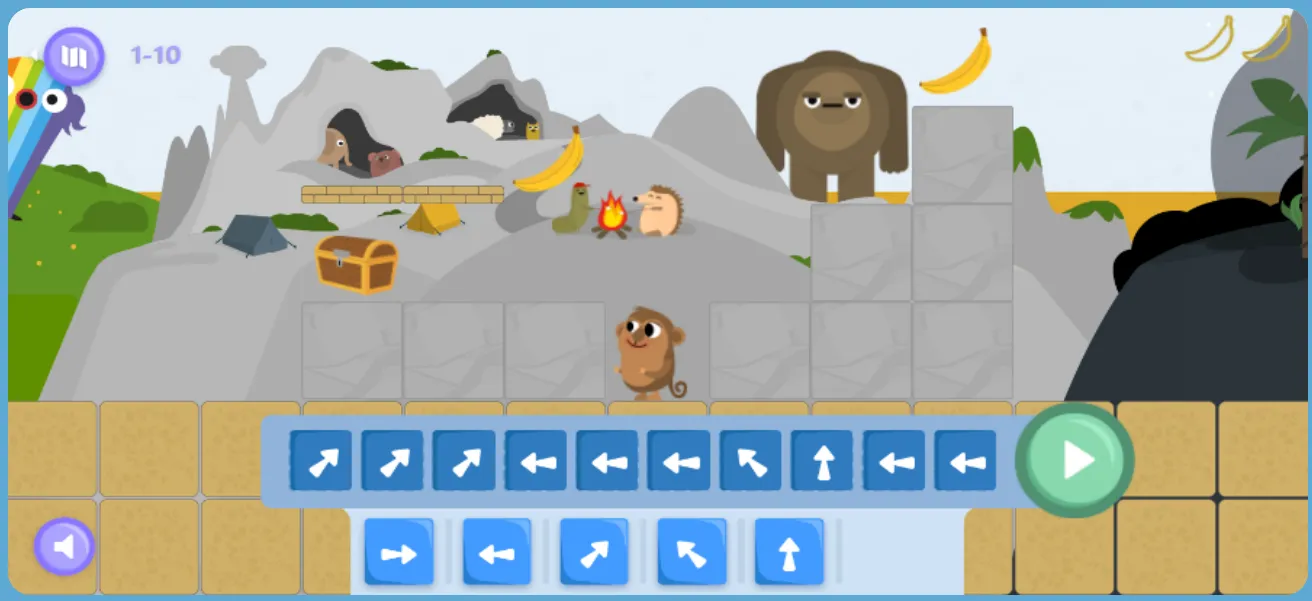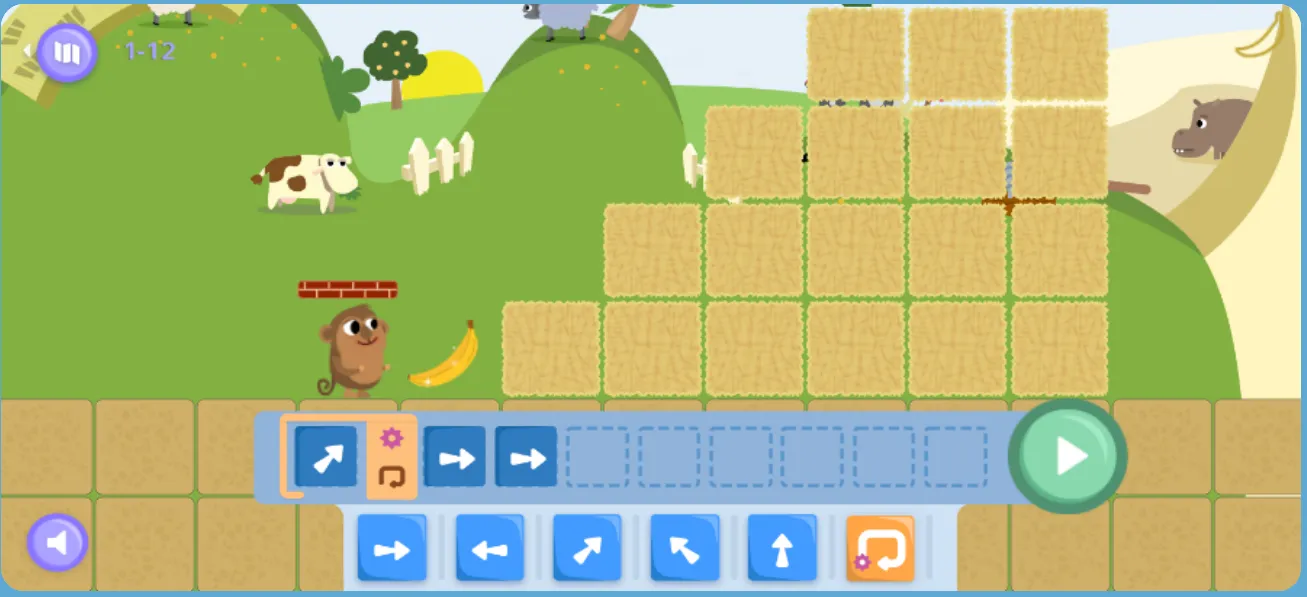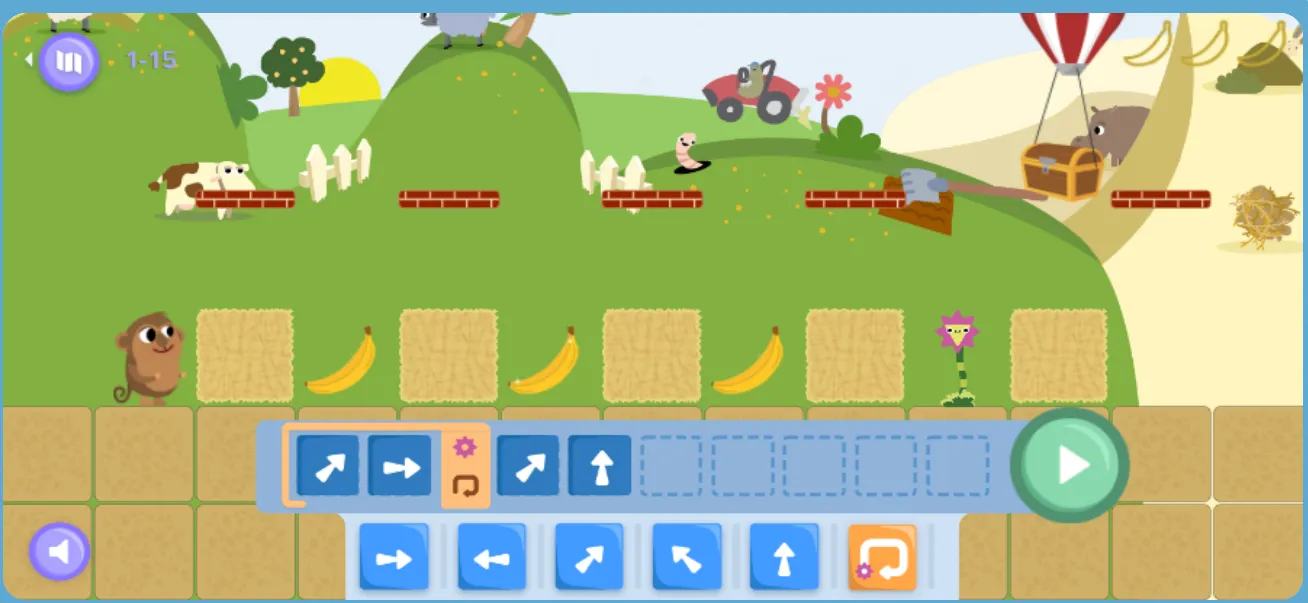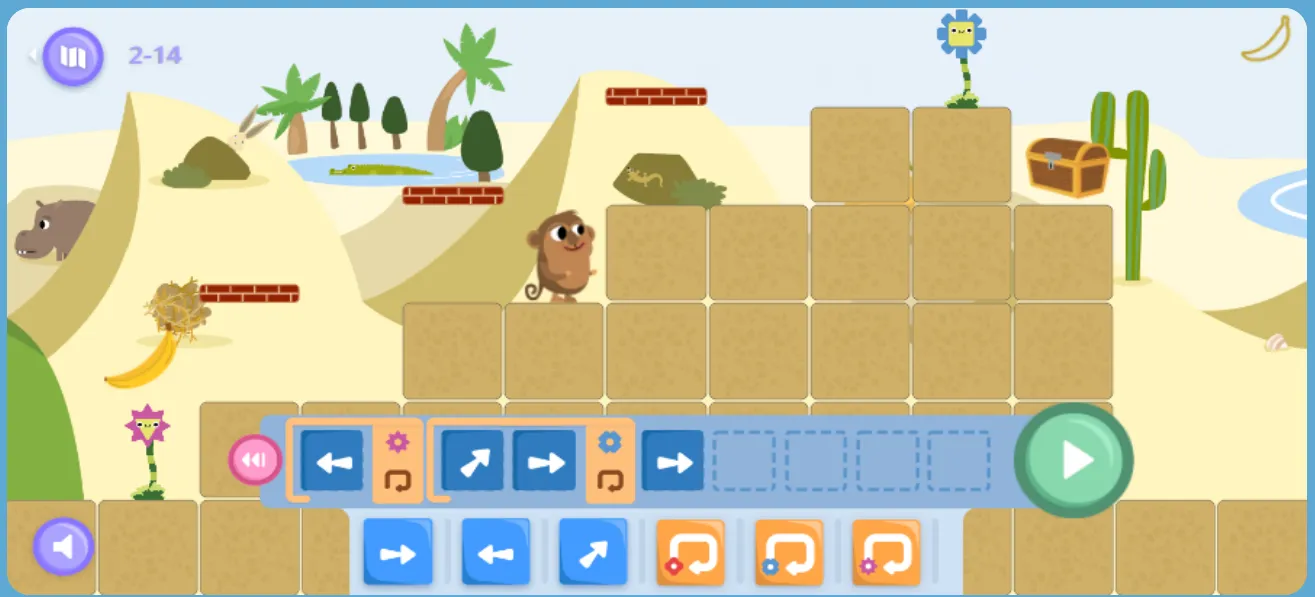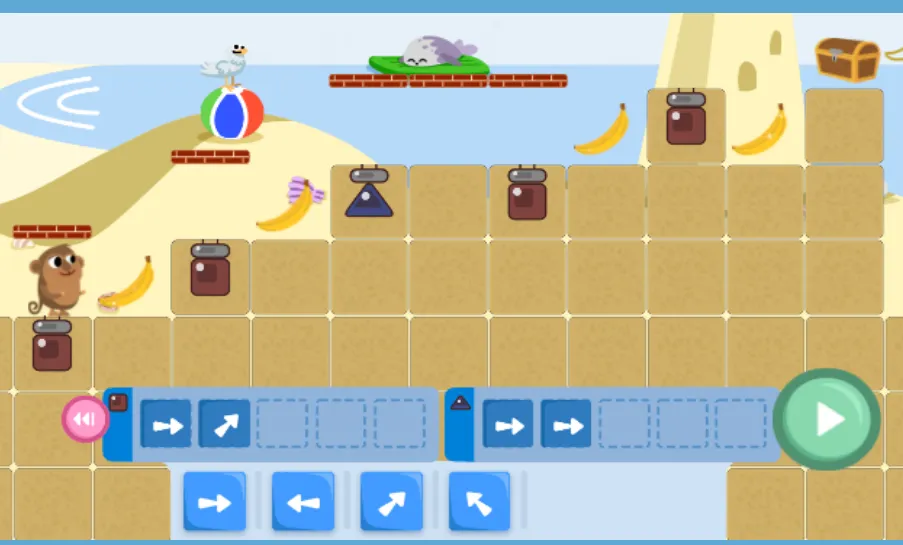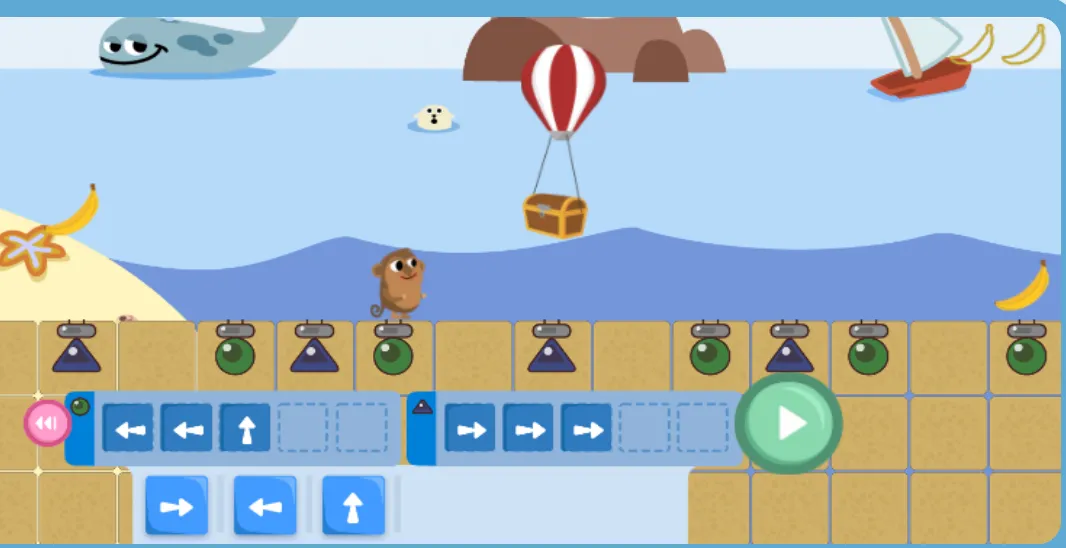Coding Group Classes for Early Coders
Each class is 50 minutes long. We adjust the classes to the pace of each student. Students typically need 4-6 months to complete the course.
Unit 1. Sequencing
Students build a foundation in coding and problem-solving.
Lesson 1. What is coding?
Students learn that coding is giving precise instructions to a computer. Then, each student creates their first program – a dance routine for the class to follow!
Lesson 2. Program using the computer
Introduces the coding platform Code Monkey™. Students do their first coding exercises on the computer, using commands to move left and right.
Lesson 3. Complex sequential programs
Students learn two new commands and how to code using advanced planning.
Lesson 4. Increasingly complex programs
Students learn one more command, jump, and use the commands they know to solve increasingly complex problems.
Unit 2. Loops
Students learn loops, a fundamental coding concept.
Lesson 1. Efficient programs
Students learn that a problem may have multiple solutions and judge which one is more efficient.
Lesson 2. Programming repetition
Students learn to write concise code using loops.
Lesson 3. Longer loops
Students continue their practice with repeat loops containing two or more commands.
Lesson 4. What stops the loop?
Students explore why some loops finish and others run forever (a deep question in theoretical computer science!)
Unit 3. Advanced Sequencing and Looping
Lesson 1. Back and Forth
Students learn to plan their journey as they must go in one direction first and then
return to get to the treasure chest.
Lesson 2. Where to first?
In this lesson, students will continue practicing solving challenges by planning their
journey. They must decide where to move first to get all the bananas.
Lesson 3. Behind you, Monkey
STudents complete the advanced sequencing chapter by coding increasingly complex paths.
Lesson 4. Loops Again
In this lesson, students will start the Advanced Loops chapter. Until now, the students solved the challenges using a loop and blocks inside it. In this lesson, students will add blocks before the loop. They will need to see the pattern to use a loop. They must identify where the loop starts and how
to get the monkey to the starting point.
Unit 4. Advanced and Conditional Looping
Lesson 1. Until When
In this lesson, students will continue solving challenges using loops. They will need to
identify the repetitive pattern and the blocks that should be before the loop.
Lesson 2. Until the End
Students complete advanced looping and code loops that are three to four commands long.
Lesson 3. Back to Business
In this lesson, students will start a new chapter of CodeMonkey Jr., which focuses on
conditional loops. Conditional loops are loops that repeat based on a certain condition.
Lesson 4. Plan, Plan, Plan
In this lesson, students will continue practicing solving challenges by planning their
journey. They must decide which instructions are before, after, and inside the loop.
Unit 5. Advanced Conditional Looping
Lesson 1. It is complicated
Students learn to code loops whose bodies are composed of two instructions.
Lesson 2. Two is a company
Students learn how to implement two separate loops, one after the other.
Lesson 3. Look Around
Students use multiple loops to move back and forth.
Lesson 4. Three is more fun
Students learn how to add more than two loops and use the same conditional loop for different parts of the solution.
Unit 6. Procedures
Lesson 1. What is a procedure?
Students learn how to write procedures and what characterizes a modular solution.
Lesson 2. Can you do it?
Students continue writing procedures.
Lesson 3. You are the master
Students need to use several procedures in each challenge, and the code of each procedure is getting longer.
Lesson 4. Advanced Procedures
Students face challenges with validating the path and moving in both directions to get to the bananas and the treasure chest.
